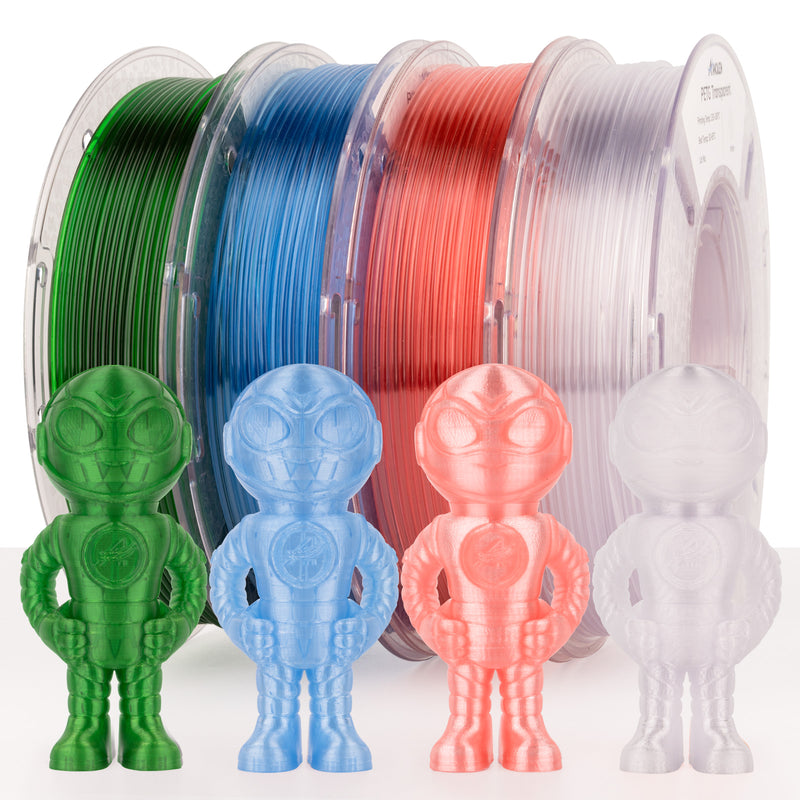Unlock the Secrets of PETG Filament: Transform Your 3D Printing Experience!
If you’re delving into the world of 3D printing, you’ve likely come across PETG filament, a material that’s gaining traction among enthusiasts and professionals alike. PETG, or polyethylene terephthalate glycol, is renowned for its durability and versatility, making it an excellent choice for various projects. In this article, we aim to explore the properties, uses, and benefits of PETG filament, helping you understand why it’s becoming a go-to material for many 3D printing applications. Whether you're a beginner or a seasoned user, gaining insights into PETG filament can elevate your printing experience and expand your creative possibilities.

Understanding PETG Filament
PETG filament is a thermoplastic polymer that combines the best features of both PLA (polylactic acid) and ABS (acrylonitrile butadiene styrene). Unlike PLA, which is biodegradable and generally easier to print, PETG offers greater strength and flexibility. It is less brittle than ABS, making it an excellent choice for functional parts that need to withstand some stress. The composition of PETG includes glycol, which modifies the polymer chains of PET, resulting in improved clarity and impact resistance. This unique combination of properties makes PETG filament a standout choice in the realm of 3D printing, catering to a wide range of applications.
Properties of PETG Filament
One of the most appealing aspects of PETG filament is its impressive set of properties. It boasts high tensile strength and excellent durability, allowing for the creation of robust parts that can endure everyday use. Additionally, PETG exhibits good flexibility, giving it the ability to bend without breaking. It also has a notable temperature resistance, capable of withstanding higher temperatures than PLA, which is crucial for applications exposed to heat. Furthermore, PETG filament is known for its low shrinkage rate during printing, reducing the likelihood of warping and ensuring a more accurate finish. These properties make PETG an ideal choice for both functional and aesthetic prints.
Applications and Uses of PETG Filament
PETG filament is widely used across various industries and projects, making it a highly versatile material. In prototyping, its strength and durability allow for the creation of functional prototypes that can be tested under real-world conditions. Moreover, PETG is commonly employed in the manufacturing of end-use products, including containers, automotive parts, and electronic housings. Hobbyists also benefit from PETG’s capabilities, as it is often used for crafting custom toys, tools, and intricate designs. A friend of mine recently printed a series of outdoor planters using PETG filament, and they turned out beautifully, showcasing the material’s weather resistance and aesthetic appeal.
Benefits of Using PETG Filament
Using PETG filament offers several advantages over other types of filament. One major benefit is its ease of printing; PETG generally requires lower printing temperatures and has excellent layer adhesion compared to ABS. Additionally, it emits minimal odor during printing, making it more pleasant to work with in enclosed spaces. Another significant advantage is its recyclability, as PETG can be recycled and reused, contributing to a more sustainable approach to 3D printing. This combination of user-friendliness and environmental consciousness makes PETG a favored choice for many 3D printing projects, whether for personal use or industry applications.
Tips for Successful Printing with PETG Filament
To achieve optimal results when printing with PETG filament, consider the following practical tips. First, adjust your printer settings; a nozzle temperature between 230°C to 250°C is generally recommended, along with a heated bed set between 70°C to 80°C to enhance adhesion. Speaking of adhesion, using a glue stick or blue painter's tape on the print bed can help prevent warping. Additionally, maintaining an ideal print speed of around 30 to 50 mm/s can ensure better layer bonding. Lastly, post-processing can significantly enhance the final appearance of your prints; consider sanding or applying a clear coat for a polished finish. These tips can help you make the most of your PETG printing experience.
Elevating Your 3D Printing with PETG Filament
In summary, PETG filament stands out as a versatile and robust choice for 3D printing, thanks to its unique properties and wide range of applications. From its strength and flexibility to its ease of use and recyclability, PETG offers significant advantages for both beginners and experienced users. We encourage you to experiment with PETG filament in your own projects; whether you’re creating functional prototypes or artistic designs, this material can elevate your 3D printing capabilities to new heights. Unlock the potential of PETG filament and transform your 3D printing experience today!












